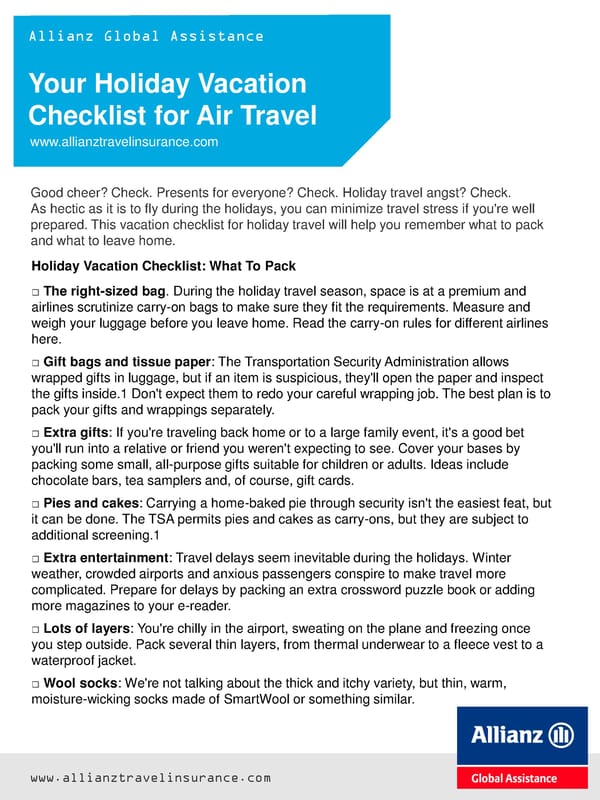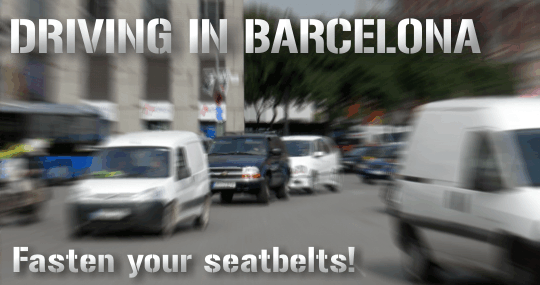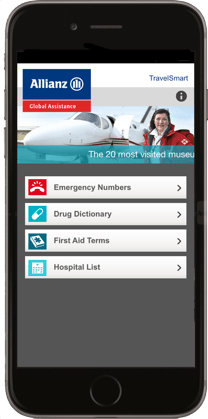ALLIANZ Travel Pack
Your Family Trip to Barcelona



-Valid driving licence : (inspección técnica de vehículos) .OECD's International Road Traffic and Accident Database (IRTAD). European Road Safety ObservatoryThe Global Road Safety Partnership (GRSP)
Driving in Barcelona and Spain
Spain has one of the highest traffic accident rates in Europe according to figures from OECD's International Road Traffic and Accident Database (IRTAD). Here are some tips and advice about driving in Barcelona and Spain.
Glossary of Spanish driving terms
Address and website DGT Spanish traffic ministry
ITV vehicle inspection
Right of way in Spanish traffic
In Spain you drive on the right side of the road. When you overtake you overtake to the left side although some cars do overtake on the inside on motorways. Cars coming from your right have the right of way. Cars that are already on a roundabout have the right of way. When driving on to motorways or dual carriageways keep in mind that many Spanish drivers are not overly helpful in making room for incoming cars. You might have to come to a full stop in the entry lane. In city traffic be especially aware of the many motorbikes and scooters (called motos.) They can appear out of nowhere and some motos save time by driving inbetween lanes and cars. This can create many dangerous situations and sadly scooters and motorbikes quite often collide with both each other and other vehicles. Speed is generally considered to be the main cause of accidents in Spain, but if you drive responsibly and keep your distance you will be fine.
-Two EU approved, red warning triangles. Fuel in Spain:Spanish traffic fines : Seat belts:Insurance:
Third party insurance is mandatory.
ITV is the safety and road worthiness vehicle inspection in Spain, which is required for all vehicles. Major towns and cities have many ITV inspection centres. The actual inspection costs around 40 euros and can usually be booked from day to day. Payment is in cash. The inspection takes about 15 minutes while ITV inspectors check your horn, windscreen wipers, seat belt, turn on your flickers/indicators, check your brake lights and your exhaust emissions, all brakes and alignment of wheels. If you pass you will get a new sticker for your windscreen. Emergency numbers:
General emergencies - 012
Police - 091
Ambulance - 092 Useful traffic and driving links:
Traffic department Spain
Fire Brigade - 080
Find ITV inspection centres in Barcelona
Inspection times for different types of vehicles: (2007)
Motorcycles less than five years old - exempt from ITV inspection
Cars over five years old - ITV inspection every two years. Private Vehicles
Cars less than four years old - exempt from ITV inspection
Cars four to ten years old - ITV inspection every two years
Cars over ten years old - ITV inspection every year
An invalid ITV sticker will generate a substantial fine around 100 - 150 euros. Your driving license could also be confiscated until you can document that your vehicle has passed the ITV inspection within 10 days.
Car lights:
Headlights are not turned on unless you are in a tunnel or during conditions of poor visibility. Motorcycles and scooters should use dipped headlights at all times.
Police:
There are currently three different police forces in Catalonia.
Mossos d' Esquadra - police force of the autonomous community of Catalunya
Guardia Civíl - National police force under authority by the Madrid government
Guardia Urbana - Local and traffic police
The Mossos d'Esquadra are replacing Spain's Policia Nacional and Guardia Civil in Catalonia. This process began in 1994 and will be completed by 2008. The Policia Nacional and the Guardia Civil will keep some officers in Catalonia to help combat terrorism, immigration and other area in which the central government still has authority.
Road Tax:
Road tax in Spain is charged once a year and calculated by the individual vehicle and the zone. It is paid to the local government. The fee is related to the individual vehicle and the area.
Compulsory for all car occupants both back and front. Children under twelve can only travel in the front passenger seat if it is in a special rear-facing children's seat.
Signposts:
Signposts can be quite confusing so bring a good map and be prepared to get lost sometimes. Be particularly watchful for lane changes. Sometimes you will find yourself directed to the right lane on a motorway in preparation for an exit. 100 metres further along on your exit will be on the left side two lanes across on the opposite side.
Parking in Barcelona:
There are many underground parking lots around the city so you can park almost anywhere. Most onlines map in Barcelona will have an option to show where parking is located. Parking is not allowed in spaces with yellow stripes. Barcelona has introduced parking zones with meters throughout the city. These spaces are marked in blue and a ticket can be bought from the nearest machine. These spaces are usually for two hours maximum period. Prices vary between zones. It is very common for cars and vans to switch on their emergency lights and double park while they unload or visit shop for brief periods. This is quite disruptive to the flow of traffic but unavoidable. If you park illegally, especially in a foreign car, you will almost certainly become a victim of the 'grua' - the city tow truck. If you get towed, they will leave a sticker on the curb with the phone number/address of your car's new location. You can get your car back after paying a fine.
Find parking in Barcelona
On the spot fines are issued. Make sure that you get an official receipt. Drivers who do not pay risk having their cars clamped at the side of the road. Do not drink and drive. The limit is 0.5 milligrams of alcohol per millilitre of blood. For new drivers the limit is 0.1 mg/l limit, which might as well be zero. The penalties are high including losing your licence on the spot and/or heavy on-the-spot fines. You will not be allowed to leave the area until you have paid any fine or appeared in court, including spending time in the cells if you cannot pay in cash.
Mobile telephones:
The use of mobile phones while driving is prohibited. True hands-free kits are allowed, but they are not allowed to have ear piece attachments. Note that this law also applies at the side of the road. You must be completely off the road and away from any traffic before you start using a mobile phone. The same applies to earplugs for walkmans, I-pods etc. Only hearing aids are allowed.
Driving licence requirements in Spain:
Minimum age for driving cars and for motorcycles over 75cc in Spain is eighteen. The 50cc scooters can be driven from age fourteen, but without passengers. Non-residents/visitors can drive in Spain using their foreign driving license for a maximum of 6 months out of the total calendar year. If you are from another EU country, then you can drive on your existing EU license until it runs outs. When it does run out you must apply for a Spanish driving licence. Non-EU residents should apply for a Spanish driving license after one year of living in Spain. If you are from outside the EU, you will need an International Driving Licence issued by the correct authority in your home country. It should have one page of information in Spanish. Holders of foreign driving licences can be given on-the-spot fines, but not penalty points.
Gasolina - Petrol
Gasoleo - Diesel
Super, unleaded = super or sin plomo 98
Normal unleaded = sin plomo 95
Diesel = gasoleo
-Two approved reflective jackets that must be worn in an emergency situation on the highway outside the vehicle all any time of the day, but not in an incident in an urban street area. The jackets should be stored inside the car and put on before getting out. The reflectivejackets should also be visible from the outside of the car. The jackets are inexpensive and can be bought at most bigger supermarkets and some petrol stations.
-A set of spare lamps/bulbs for your car and the tool/s to change them.
-If you wear glasses for driving, you should have a spare pair.
-Your number plate should be an EU one with the ring of stars and your country code, or a small plate/sticker with your country code (GB, etc) on the back of your car.
-Valid third party insurance policy
-All vehicle documents or legally certified copies relating to the car ownership. If the vehicle is not registered in your name, you should obtain a letter from the registered owner, which gives you permission to drive.
Spanish roads & speed limits
The motorways in Barcelona and Catalonia are among the best in Europe. The toll roads are quite expensive but generally not too crowded except during rush hour. If you want to avoid 3 hour queues when leaving or returning to Barcelona in connection with week-end trips, then leave the city a bit earlier than the residents of Barcelona, and come back a bit earlier too. Generally residents of Barcelona will not head off until 12'ish on a Saturday to go for a weekend trip and they will head back to Barcelona around 6 or 7 on Sundays, so that is when you will find the longest queues on both toll roads and free roads. If you are going on a longer trip, then toll roads are definitely worth the extra expense.
Autopista - motorway
A or E in front of road number.
A roads are generally toll roads.
"Peajes" means toll roads
Speed limit is 120 kph (73 mph) (was 110km for part of 2011 to save fuel due to high petrol prices.)
Autovía - dual carriageway.
Speed limits vary from 80 to 140 kph.
Carretera Nacional - national/main road
N or CN in front of road number
Speed limit 100 to 60 kph.
Carretera Comarcal - regional/country road.
C in front of road number,
Speed limit 100 to 80 kph.
Carretera Local - highway.
Speeds are as signed, but usually not more than 100 kph.
Toll/ Peaje roads:
Spain has over 2,000 km of toll roads of excellent quality. The tolls are quite expensive, especially in summer when the rates are doubled. The rates fro cars are per vehicle irregardless of number of occupants and based on distances covered. Toll booth have several lanes. All open lanes will have a green arrow, closed lanes will have a red cross.
"T" means "telepago." This lane is for cars that pay automatically with a special chip on the windscreen.
"Automático" are lanes for drivers paying by credit card.
"Manual" are lanes with an attendant who will take payment in cash or by credit card.
What should be in cars for driving in Spain?
Vehicle inspection ITV Find more emergency numbers here:
Dirección General de Tráfico - Spainhttp://www.cemt.org/irtad/IRTADPUBLIC/we2.htmlhttp://www.erso.eu/
http://www.grsproadsafety.org/
© Copyright Barcelonayellow.com
Do not copy from this page without permission All rights reserved.









Area of cover
You will not be covered if you travel outside the area you have chosen, as shown on your e-mail confirmation.
EuropeUK, Continental Europe, Mediterranean Islands, the Channel Islands, Isle of Man, Morocco, Algeria, Tunisia, Libya, Egypt, Israel, Turkey, Madeira, Canary Islands, the Azores, the Republic of Ireland, Iceland, Russia, Estonia, Latvia, Lithuania, Belarus, Ukraine, Moldova and Georgia.
When the following words and phrases appear in the policy document or booking confirmation, they have the meaning given below. These words appear in bold print.
Business associate
Anyone you work closely with, and whose unexpected absence from work means that a senior manager or director for your business needs you to cancel or cut short your journey.
Couple
Two adults who have been permanently living together at the same address for more than six months and who will be travelling together. Cover will not apply unless both persons are booked to travel together.
Doctor
A legally qualified doctor who holds the necessary certification in the country they are currently practising in, other than you or a relative.
Excess, excesses
The deduction we will make for the amount otherwise payable under this policy for each person insured, for each section, for each claim incident. For example a couple that both have personal possessions stolen from their bag and both incur a medical expense during the same journey, will have a total of four excesses deducted. Two of these will be for the two claims under section 5 (possessions) and two of these will be for the two claims under section 2 (medical).
Family
Two adults and all of their children (including foster children) aged 17 and under if in full time education. All persons must live at the same address. Each adult can travel independently, however, all insured children must travel with at least one of the insured adults.).
Home
Your usual place of residence in the UK, the Channel Islands or the Isle of Man.
Insurer
Journey
A trip that takes place during the period of insurance which begins when you leave home and ends when you get back home or to a hospital or nursing home in your home country, whichever is earlier.
* For single trip cover:
- you will only be covered if you are aged 64 or under at the date your policy was issued. - any other trip which begins after you get back is not covered. - a trip which is booked to last longer than 180 days is not covered. - you will only be covered for taking part in winter sports activities when the extra premium has been paid and this is shown on your insurance confirmation email.
* For backpacker cover:
- you will only be covered if you are aged 64 or under at the date your policy was issued. - any other trip which begins after you get back is not covered. - a trip which is booked to last longer than 180 days is not covered. - you will only be covered for taking part in winter sports activities when the extra premium has been paid and this is shown on your insurance confirmation email
Period of insurance
* For single trip and backpacker cover
Cancellation cover begins from the issue date shown on your insurance confirmation email and ends at the beginning of your journey. The cover for all other sections starts at the beginning of your journey and finishes at the end of your journey.
* For annual multi-trip cover
Cancellation cover begins on the start date shown on your insurance confirmation email or the date you booked your journey, whichever is the later and ends at the beginning of your journey. The cover for all other sections starts at the beginning of your journey and finishes at the end of your journey.
* For single trip, backpacker and annual multi-trip cover
All cover ends on the expiry date shown on your insurance confirmation email, unless you cannot finish your journey as planned because of death, injury or illness or there is a delay to the public transport system that cannot be avoided. In these circumstances, we will extend cover free of charge until you can reasonably finish that
Resident
A person who has their main home and is registered with a doctor in the UK, the Channel Islands or the Isle of Man and has not spent more than six months abroad during the year before the policy was issued.
Travelling companion
Any person that has booked travel with you on your journey.
We, our, us
Allianz Global Assistance who administer the insurance on behalf of the insurer.
You, your, yourself, insured person
Each person shown on your e-mail confirmation, who the appropriate insurance premium has been paid for.

